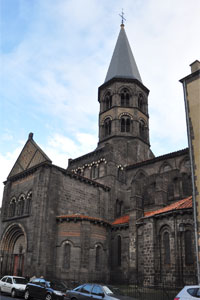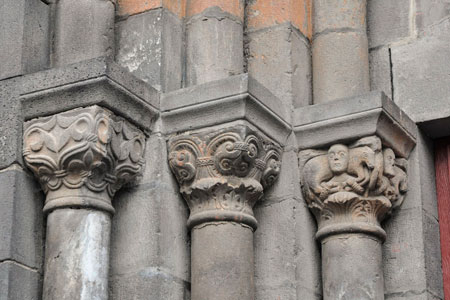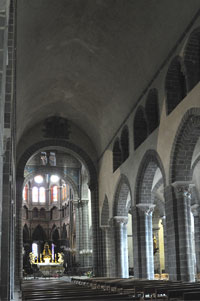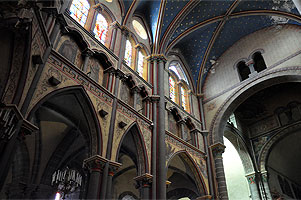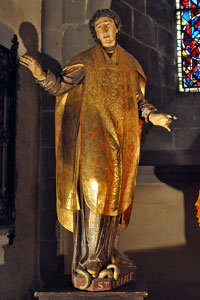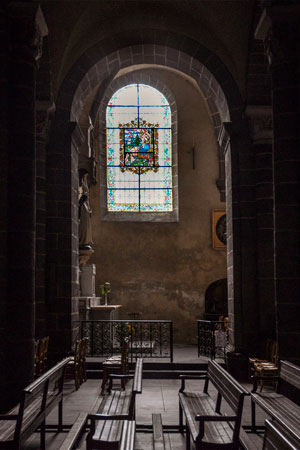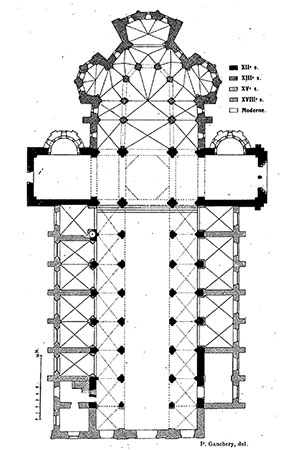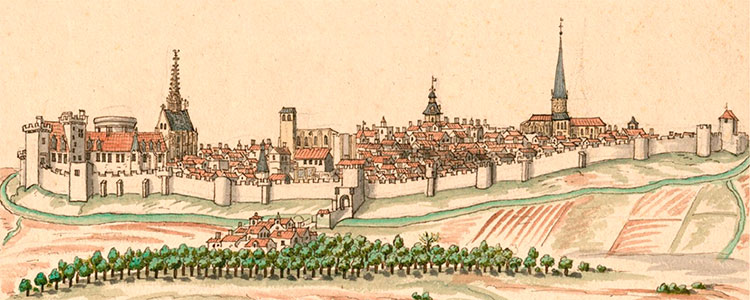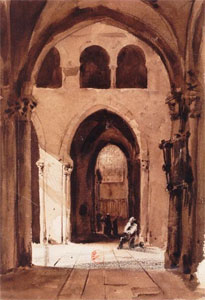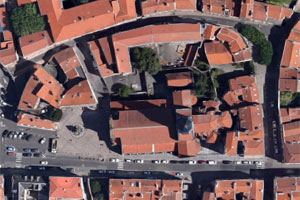Abbey of Saint-Amable de Riom
Riomo / S Amabilis Riomensis / Ricomagense Amabilis
(Riom, Puy-de-Dôme)
According to tradition, in the 5th century Saint Amable de Riom (397-475) is said to have built here a church dedicated to Saint Benignus of Dijon, although it should be noted that the cult of this latter saint was only introduced in the 6th century. In 475, upon Amable’s death, his body was buried in Clermont-Ferrand, and from that moment miraculous events began to be attributed to him, drawing numerous pilgrims.
Because of this, in 649 his relics were transferred to Riom and the site then came under the patronage of Saint-Amable. In 1077 Bishop Durand of Clermont granted this church to Pierre de Chavanon (c. 1007-1080), who had previously founded the abbey of Notre-Dame de Pébrac (Haute-Loire), with the aim of establishing a new community of canons regular here, although it retained its parochial function. The first abbot of the house was probably Pierre de Chavanon himself.
The houses of Pébrac and Saint-Amable maintained close ties in the following years. In 1196 Count Guy II of Auvergne entrusted the community with the management of Riom’s hospital, an institution it administered until the 16th century. The last regular abbot was Jean d’Amy; in 1515 the first commendatory abbot, Guillaume de Benauld, was appointed. In 1548 Pope Paul III ordered its secularisation, which took effect in 1570. The new collegiate church remained active until the Revolution, when the church was closed.
The present building is the result of centuries of construction and alteration: the naves and transept are the oldest parts, dating from the 12th century, while the chevet was erected during the 13th century. The chancel is surrounded by an ambulatory with three polygonal-plan radial chapels. In the 15th century lateral chapels were added on the north side of the nave, and in the 18th century on the south side as well. The façade belongs to this latter phase, dating from 1750. After the Revolution the complex underwent further restoration and alteration, especially the transept, to which two small apses were added. The church is the sole surviving remnant of the monastic complex that once stood on this site.
Gregory of Tours refers to Amable as a cleric of Riom and emphasises the devotion aroused by his tomb thanks to the miracles reported there; apart from this, the account of his life is a much later elaboration. According to that tradition, Amable was born near Riom in 397 into a noble family; he served as a cleric in Clermont-Ferrand before moving to Riom, to the church of Saint-Gervais-et-Protais, where he founded a church dedicated to Saint Benignus of Dijon. He is said to have died in 475 and was buried in Clermont until, in the 7th century, his remains were transferred to Riom.
- BEAUNIER, Dom (1912). Abbayes et prieurés de l'ancienne France. Vol. 5. Bourges. Abbaye de Ligugé
- BERNET-ROLLANDE, L. (1891). Saint Amable, sa vie, son église, son culte. Clarmont: Bellet et Fils
- COURTILLÉ, Anne (1990). Auvergne et Bourbonnais gothiques. Vol. 1. Nonette: Créer
- GAUCHERY, Paul (1916). Riom. Église Saint-Amable. Congrès archéologique de France. LXXX ss. Société française d'archéologie
- GRÉGOIRE DE TOURS (1668). L'Histoire des François. Vol. II. París: F. Léonard
- GUÉRIN, Paul (1888). Les Petits Bollandistes. Vies des saints. Vol. 8. París: Bloud et Barral
- LEQUENNE, Fernand (1962). Riom, petite ville, grande histoire. Clermont-Ferrand: Bussac
- MORAND, Edmond (1930). L'abbaye de Saint-Amable de Riom. Clermont-Ferrand: Impr. Générale
- MORAND, Edmond (1964). La date de construction du choeur de Saint-Amable de Riom. Bulletin Monumental, vol. 122
- PIÉRA, Pascal (2000). Les transformations de l'église Saint-Amable de Riom au XVIIIe siècle. Congrès archéologique de France. 158 s. Société française d'archéologie
- SAINT-MAUR, Congregació de (1720). Gallia Christiana in provincias ecclesiasticas distributa. Vol. 2. París: Typographia Regia
- TAYLOR, J.; i altres (1829). Voyages pittoresques et romantiques dans l'ancienne France. Auvergne. París: Firmin Didot


